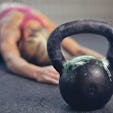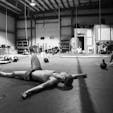What would you say if I said most therapies designed to reduce pain and improve posture were palliative at best, harmful at the worst, and just plain ineffective at getting to the cause of dysfunction?
Acupuncture, massage, rolfing, body rolling, stretching, corrective exercises, physical therapy, chiropractic, and strength training are great at improving some symptoms, but rarely treat the cause of postural pain and related distortions.
Ever wonder why you need to get chiropractic adjustment on your 4th lumbar monthly for that Lumbago? Or why your cervical kyphosis never goes away no matter how much rehab you do?
As Grey Cook says “building strength upon dysfunction”. So, do we possess the ability to self-correct postural deviations in the horizontal and vertical plane? Is this true? I will pose an argument saying no.
The human body has to overcome gravity, external forces, positioning in space and time, and preparation for movement. Perfect posture is the domain of only 10% of the standing (pun intended) population.
That leaves 90% of us with at least a degree of pain and postural distortion. So, the fact that even after therapy, your head still tilts, your shoulders tilt, your hips tilt, your foot arch drops, and you still have tightness throughout your body proves that your therapy has been ineffective at alleviating the cause of the problem.
Welcome to Your Tonic Postural System – (TPS)
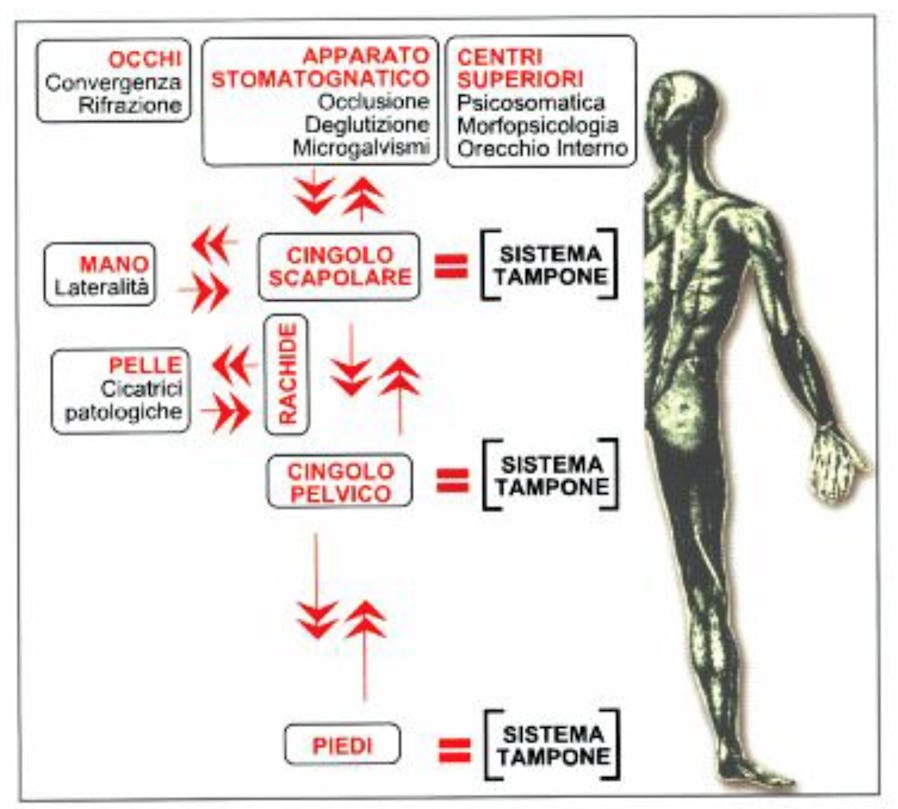
The tonic postural system is a connection between the following components:
â The eyes
â Maxilla, mandible (jaw)
â Scapular girdle/arms
â Spine
â Pelvic Girdle
â Feet
â Skin
The basic layout of the tonic postural system is as follows. Information is picked up by our sensors, goes to the central computer, then goes to the effectors. This process can also reverse in any direction.
“The moment one or several sensors are disturbed, a distortion will appear with, an array of strains. The Tonic Postural System is a cybernetic system with 2 characteristics. It is self-maintaining and self-adapting. It accepts as valid any information from its sensors, even faulty data. It incorporates and adapts it accordingly, possibly leading to a state of imbalance. It can never correct on its own. If the information transmitted by the sensors is bad or pathological the central computer adapts it and considers this bad pattern as normal. Including those with a muscular component.”
Bernard Bricot MD- Founded the College Of Static Studies (Who has trained over 6,000 physicians in the studies of Postural Reprogramming).
Here is How Humans Should be Aligned
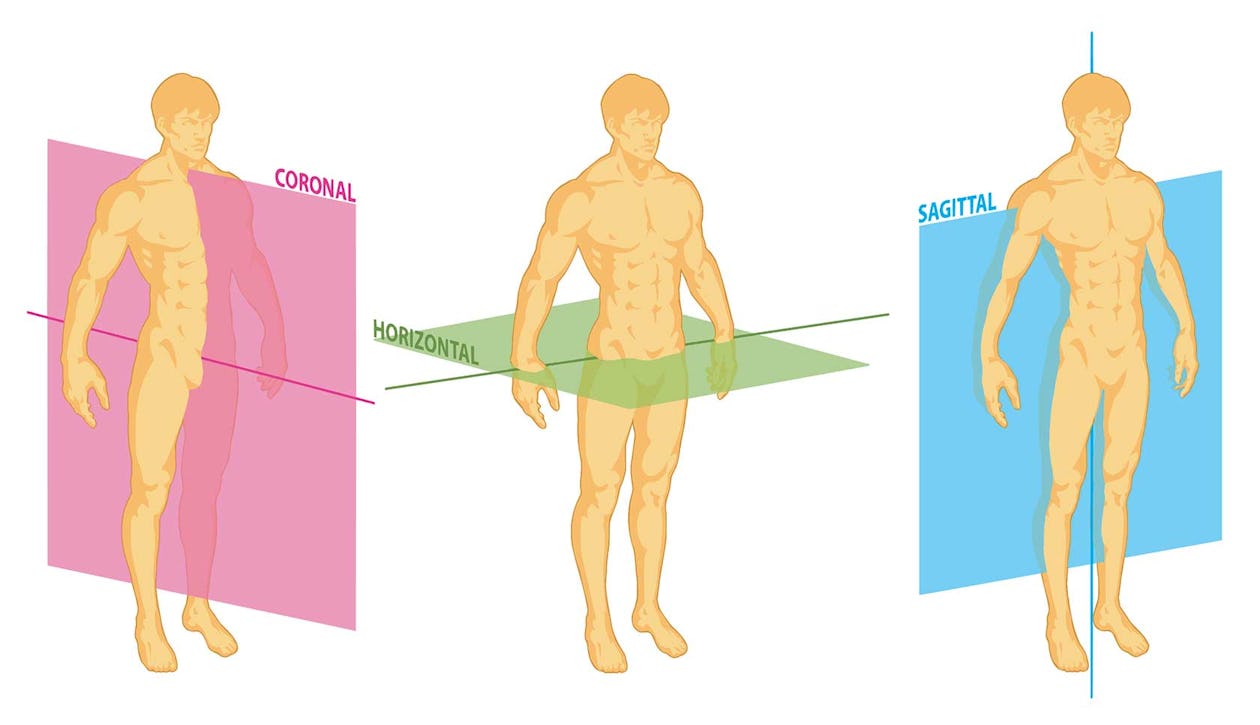
1. In a side (sagittal) plane view the little knob of your 2nd cervical (Odontoid process) should line up with your 3rd Lumbar body, and intersect midway through your foot.
2. In a front view your pupils, ear holes, corners of your mouth, scapular girdle, nipples, styloids of the wrist, pelvic girdle, should all be aligned with a sacral angle of 32 degrees.
Briefly, what an imbalance may look like, we will go into the patterns more in-depth in part 3. These are not set in stone, but are more like patterns:
Sagittal Plane
â Increased curvatures of the spine are usually due to slightly pronated or valgus feet.
â Decreased spinal curvatures (flat back) are due to highly arched feet.
â Slouched back posterior scapular plane compared to glutes (think Michael Phelps). Think flat feet.
â And a scapular plane ahead of the glutes are mixed component feet.
â The human body should be free of asymmetry.
â There should be no rotations.
The Physiology of Imbalance
Let’s start with the brain’s primary contact to the ground. It’s the terminal buffer. The foot is essentially a bundle of nerves that tell your brain where it is in space and time. The foot can be both causative and adaptive, which can cause a postural distortion or be the result of it.
It responds adaptively due to the eyes and jaw. Yes, your feet move and shift based on distortions of the movement of eyes (muscles), and that of the jaw. Many studies and clinical results show the effects of eyes and jaw on the feet. And vice versa.
Now, if these effects have been set in for an extended period your muscles and joints bones, ligaments store this information as normal.
My argument for how a causative foot happens is footwear (There is tons of clinical evidence for this but scientific evidence is lacking at this point). Wearing pillows (foam) on your feet all day…heels that launch you forward…soles that limit normal movement of the feet.
And proprioception being, thrown off for hours at a time. Also to a lesser extent¦baby walkers and bouncy things that allow a child to put pressure in their hip sockets before full cross crawl abilities and strength from crawling have been developed.
Eyes
In the same way the foot works as an exosensor and endosensor, the eyes are vital to the TPS. An imbalance in the oculomotor muscles generates a disequilibrium that results in tilting and rotations. This is not about vision. This is about eye movement or refractive disorders.
Once these disorders set in, they will never correct themselves. You will have them for life unless you do specific corrective exercises. These disorders are convergence and heterophoria defects. Convergence disorders will not fix themselves.
B.J. Barron demonstrated in a study, that he stimulated ocular muscles in a fish¦It swam around the tank unidirectionally and it’s spine developed scoliosis. Children with scoliosis almost always invariably have oculomotor disorders.
In other studies, vibrations to eye muscles caused rotations of the head and shoulder girdle.
The Manducatory System (Jaw)
An often overlooked reason for disharmonic posture. Osteopaths have known the TMJ can affect the hips for over a hundred years. The jaw can influence weight distribution almost immediately. Differences can be seen immediately with a bite splint.
The jaw can also influence the eye through the trigeminal nerve. It’s the nerve responsible for chewing and motor functions of the face. It affects the eyes, tongue position and swallowing functions. Even hearing through the tensor tympani!
The repositioning of the mandible has been proven to shift the muscles of the neck, the scapular position, and facial harmony. When the face is dysmorphic (not symmetric) the postural consequences show in vertebral disorders, tilting, rotation, and reduced range of motion of the various girdles.
The typical pattern is an anterior head position for malocclusion (overbite), with a flat back and anterior scapular plane and a military (straight neck) for an underbite. Missing teeth and dentures needing may also have a huge effect.
Clenching teeth
Clenching Teeth at night almost guarantees pain and postural problems.
Obstacles to Fixing Poor Posture
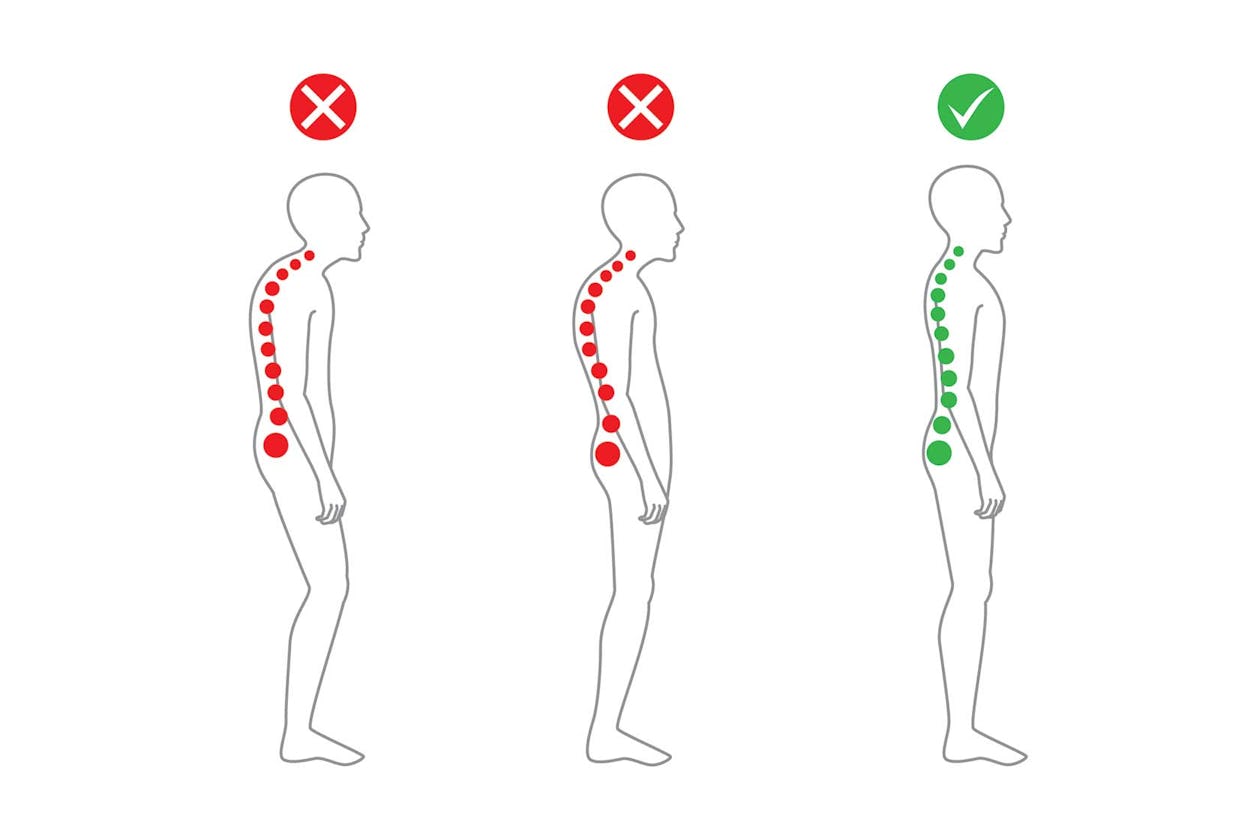
Microcurrents
A current of 60 millivolts in the mouth has been shown to contract the Masseter and Pterygoid muscles of the mouth. Clinically due, the saliva, metal amalgams, crowns and such discharges of over 300 millivolts have been observed. This is found with the use of a voltmeter.
Then wearing metal, as in chains and rings can cause abnormal fascial restriction and abhorrent muscular responses. So think of any tightness and spasm of the scapular, head, and neck area. One may test the range of motion, remove all jewelry and retest.
Many times neck rotation will increase. One may have no amalgam in the mouth but still produce a current to their jewelry. Amalgams may just exacerbate the issue.
This charge can result in muscular spasm, acidosis, and abnormal glycogen buildup. Symptoms are wide ranging!!!! And can include fatigue, maladjusted, exhausted, loss of strength, malaise, lightheadedness, loss of balance, insomnia, etc.
1st Rib
As a therapist I find these out on everyone…all the time! Ok, it is an exaggeration, but this is the most common subluxation I find in my clients along with the tailbone (coccyx). The 1st rib is the weak point of the upper body. It is supposed to move with every breath, and it can affect the Stellate Ganglion.
The slightest movement can affect the subclavian artery. How does the first rib sublux? Overhead pressing, falling onto your hands, cervical sprains, and rotations through the shoulder girdle. Pathologic scars on the neck can also cause adrenalin release causing this issue.
Some strange symptoms from 1st rib are vertigo, constipation, colitis, thoracic outlet syndrome, shoulder, head, and neck pain.
Coccyx
Tied for the top in sheer numbers of subluxations I see in my practice. I find it extremely common in athletes of all walks. Also a wide-ranging symptomology from the lumbar on down. Found in everything from sacroiliac pain, arthritis in hips, lumbar pain.
A huge influence on the pelvic floor. I find it often accompanies postural rotations, tilts, and short leg syndrome.
Scars
The scar can stretch the skins receptors sending noxious signals and over excitation to the dermatomes and the muscles belonging to them. Scars in this regard can cause metabolic dysregulation of hormones like cortisol. Scars can affect the Chinese meridian system.
Although science will not confirm it exists, I see its effects on the meridians in clinical practice. Scars can block postural reprogramming through multiple means.
Dental Foci
A bad tooth! I have seen a bad tooth mimic symptoms of Fibromyalgia. When postural reprogramming fails especially concerning the scapular issues, thoracic outlet, brachial plexus issues, and tendonitis. Start thinking tooth.
On the physiological side, one may see recurring urinary infections, respiratory allergies, digestive issues and endocrine problems.
Conclusion
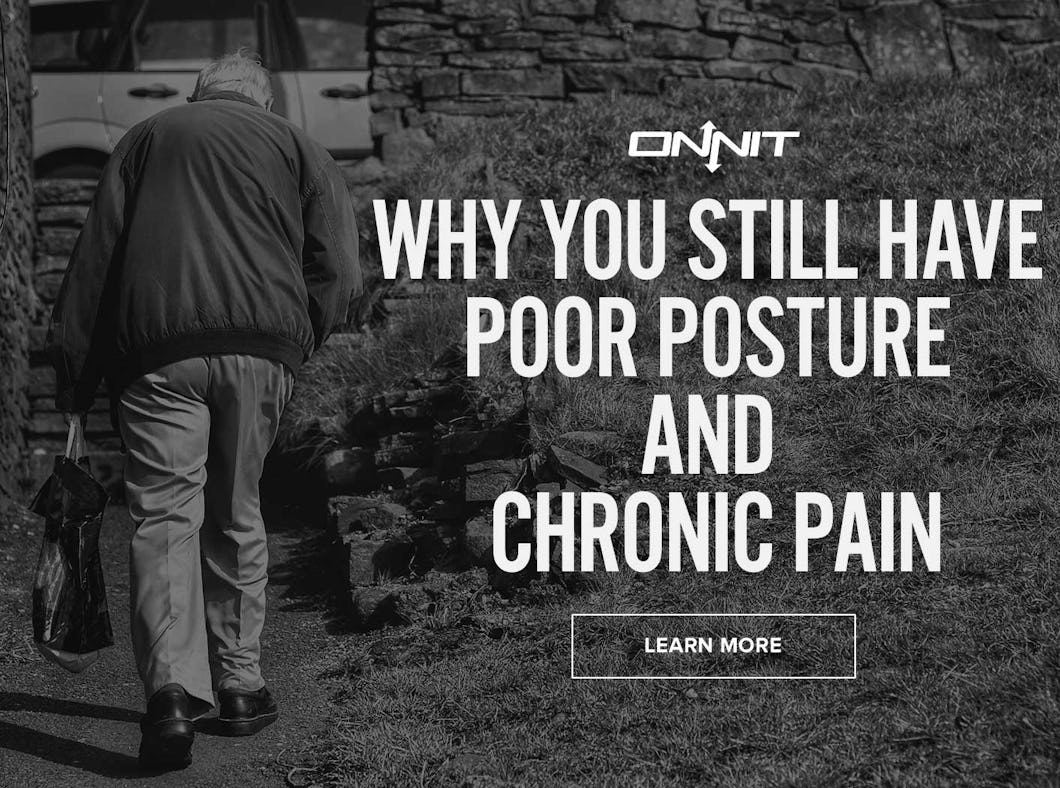
So there you have it! The most often overlooked reasons why posture does not change and henceforth pain never goes away or tends to come back or relocate to another area farther down the chain.
Numerous advances in neurological research, the telemetry to measure impulses, and significant clinical minds are opening the advances in the study of postural deformations and how to improve clinical outcomes.
In the second article, I plan to give you clinical correlations so you can figure out if you indeed could use postural reprogramming. I would posit that since 90% of us are imperfect or have some level of pain that 90% of the population could stand to at least be evaluated.
In the third and final article I will tell you how postural reprogramming works, and the science behind it. And although you will not be able to correct this on your own.
You will have the basic science and I will have a list of prominent posturologists in U.S.A. and Canada if you choose to seek out a possible solution to your long-standing issues (yes, another bad posture pun)!

)

